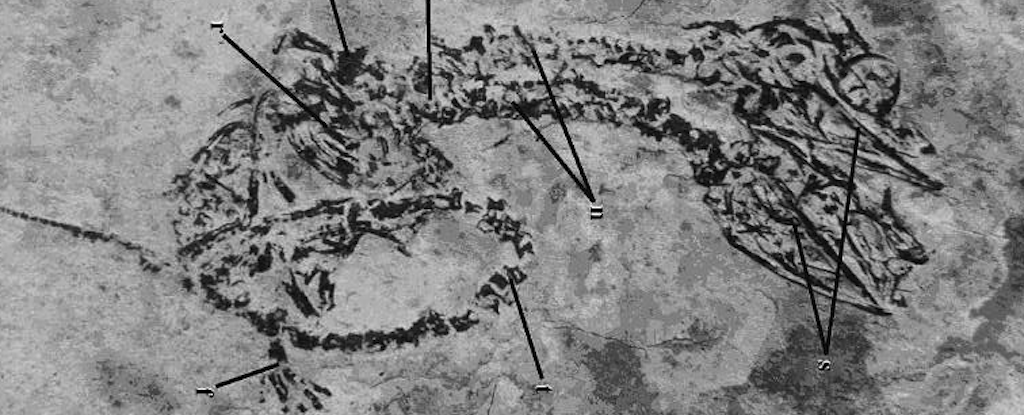
Paleontologists have uncovered a remarkable fossil of a two-headed creature known as Hyphalosaurus, shedding light on rare developmental malformations that have persisted for millions of years. This aquatic reptile, which lived over 120 million years ago, is notable not just for its age but for its unusual condition, termed axial bifurcation. This phenomenon occurs when an embryo begins to split into twins but does not complete the process, resulting in a creature with two complete heads.
The discovery was made in 2006, when researchers in China described the fossil in the journal Biology Letters. The specimen measures just 70 millimeters in length, suggesting it may be an embryo or a newborn. “Starting from the level of the pectoral girdle, the vertebral column divides into two cervical series, forming two long necks that end in two skulls,” the researchers detailed in their findings.
Significance of the Discovery
While instances of two-headed animals are rare in modern times, they have been documented in various species, including snakes, turtles, and even deer. Such malformations, while fascinating, often result in poor survival rates. In the case of Hyphalosaurus, the ancient reptile likely faced similar challenges, as two-headed specimens typically do not survive to adulthood.
This fossil stands out as the oldest-known example of axial bifurcation from the early Cretaceous Period. The researchers expressed their excitement over the find, noting that the fossil’s preservation is exceptional. Unlike other specimens from the area that have been found to be fakes, this particular fossil appears genuine. A fine coating of sediment partially covers the bones, and the slab of stone on which they rest is intact, showing no signs of alterations.
The chances of preserving a rare condition like this are incredibly slim. Fossils represent only a tiny fraction of the life forms that existed in the past. The fact that this two-headed reptile has survived the test of time is a significant achievement in paleontological research.
A Unique Contribution to Paleontology
The researchers concluded that this two-headed reptile seems to be unique in the fossil record, offering invaluable insights into the developmental biology of ancient species. The discovery not only enriches our understanding of malformations in prehistoric creatures but also emphasizes the importance of ongoing paleontological exploration.
In a world where the fossil record remains incomplete, finds like the Hyphalosaurus provide a glimpse into the complexities of life that thrived millions of years ago. As scientists continue to study these ancient remains, they hope to unravel more mysteries surrounding the evolution and biology of early reptiles and their adaptations in a changing world.







